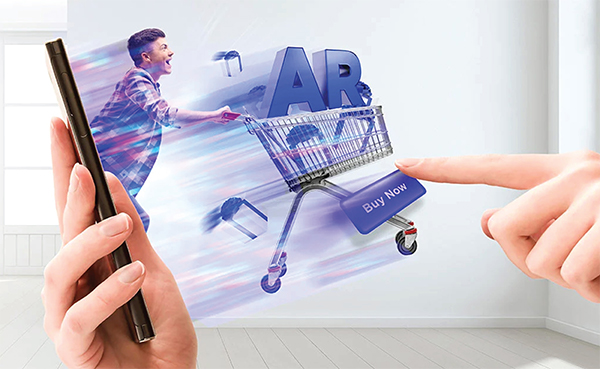
Introduction
Augmented Reality, often associated with futuristic concepts, has seamlessly integrated itself into the digital realm, offering an immersive and interactive dimension to online shopping.

Historical Context
To understand the significance of AR in e-commerce shopify services USA, we must trace its evolution, recognizing key milestones that have shaped its role in the digital retail sphere.
How AR Works in E-commerce
Exploring the mechanics of AR and its integration into various e-commerce platforms provides insights into the technological marvel that enhances the online shopping experience.
Impact on Customer Engagement
The introduction of AR has elevated customer engagement by providing users with an unparalleled visual and interactive experience, significantly influencing their purchasing decisions.
Enhanced Product Visualization
AR facilitates a detailed examination of products in a virtual space, allowing customers to view items from every angle, closely mimicking the physical shopping experience.
Increased Interactivity
Interactive features, such as virtual buttons and touchpoints, enable users to engage with products in real-time, fostering a deeper connection with the items they are considering.
Improving the Buying Decision
AR has become a potent tool for consumers, aiding in the decision-making process through features like virtual try-on experiences and AI-driven product recommendations.
Virtual Try-On Experiences
One of the standout applications of AR in e-commerce is the ability to virtually try on products, such as clothing, accessories, and even furniture, providing users with a sense of how items will look in their personal spaces.
AR-Powered Product Recommendations
Leveraging machine learning, AR contributes to more accurate and personalized product recommendations, enhancing the relevance of suggestions for individual shoppers.
Overcoming Implementation Challenges
While AR holds immense promise, its implementation in e-commerce comes with its own set of challenges, including technical considerations and concerns related to user adoption.
Technical Considerations
Ensuring seamless integration of AR features requires careful attention to technical aspects, such as device compatibility, app performance, and data security.
User Adoption Concerns
While AR is gaining traction, some consumers may still harbor reservations. Addressing concerns related to privacy, usability, and the learning curve is crucial for widespread adoption.
Success Stories
Several businesses have successfully harnessed the power of AR to elevate their e-commerce strategies. Examining these success stories provides valuable insights.
Future Trends
Anticipating future developments in AR technology allows businesses to stay ahead of the curve, adopting innovative practices that enhance the overall shopping journey.
Benefits for Retailers
The integration of AR in e-commerce not only benefits consumers but also offers substantial advantages to retailers, ranging from increased conversion rates to reduced return rates.
Increased Conversion Rates
AR-driven features contribute to a higher conversion rate as customers gain a clearer understanding of products, resulting in more confident purchasing decisions.
Reduced Return Rates
By providing a more accurate representation of products, AR minimizes the likelihood of returns, benefiting retailers and streamlining the overall shopping process.
Benefits for Consumers
From an enhanced shopping experience to increased confidence in product choices, consumers reap a multitude of benefits from the incorporation of AR in e-commerce.
Enhanced Shopping Experience
AR transforms the online shopping experience into an engaging and dynamic process, bridging the gap between the virtual and physical realms.
Confidence in Product Choices
Virtual try-on experiences and detailed product visualizations instill confidence in consumers, reducing uncertainty about the suitability of their chosen items.
Challenges Ahead
Despite its potential, AR in e-commerce faces challenges that must be addressed to ensure its seamless integration into the mainstream.
Remaining Obstacles for Widespread AR Adoption
Challenges such as the cost of implementation, technological barriers, and varying levels of consumer readiness pose hurdles that need careful navigation.
The Role of Mobile Devices
The ubiquity of smartphones plays a pivotal role in the widespread adoption of AR, as mobile applications bring AR experiences to the fingertips of a vast user base.
A closer look at a specific brand's successful integration of AR sheds light on practical applications and the tangible benefits reaped from embracing this technology.
Expert Opinions
Industry experts share their perspectives on the current state and future trajectory of AR in e-commerce, offering valuable insights for businesses and consumers alike.
Conclusion
In conclusion, the rise of Augmented Reality in e-commerce marks a paradigm shift, enhancing the online shopping journey in unprecedented ways. As AR technology continues to evolve, its impact on both retailers and consumers is poised to grow exponentially.




